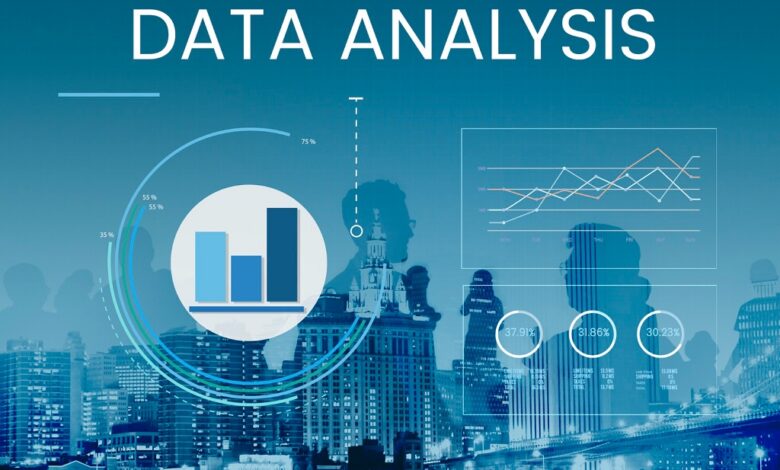
Did you know that Data Analytics has a major role in Dairy Production Rates? Data analysis is not only beneficial for the financial aspect but also improves animal health, resulting in a higher milk yield.
While data analytics can provide valuable insights for improving milk production on dairy farms, it may overlook the importance of factors such as animal welfare, which can significantly impact overall productivity and quality of the milk.
Mid Valley Foods’ integrated dairy farm demonstrated this. All records are collected and used to analyze individual cows’ health, breeding, milk production, and changes in milk output.
Role of Data Analytics in Dairy Farm Milk Production
The role of data analytics in improving dairy farm milk production is crucial and can potentially revolutionize the industry.
Data analytics allow dairy farmers to gain valuable insights into their operations, such as milk yield, feed efficiency, and overall herd health.

This enables them to make informed decisions and implement strategies that maximize milk production and profitability.
With the help of data analytics, dairy farmers can identify patterns and trends, detect potential issues early on, and ultimately optimize their farm’s performance to meet the ever-increasing demand for high-quality dairy products.
Related: Data Governance Best Practices: How Software Can Help You Maintain Data Quality
#1. Blue Collar Sensor Tag:
Data Analytics allows for continuous monitoring of cows. Around each cow’s neck is a blue-collar tag with a unique identification. These tags monitor the health and well-being of cows. Four hundred cows, including Jersey, Ongole Gir, Holstein, and Ghashian, are being monitored to test the sensor.
These cows can gaze at 125 acres of land in Arumbavur, Tamil Nadu, near the foothills of Panchali Malai. These tags transmit all the information about the cattle to the central server. A veterinarian also monitors cows to ensure that the appropriate action is taken.
#2. Insemination:
An alert will be sent to the server when a cow is inseminating. Veterinaries would touch the nose of the cow to detect the readiness for insemination. Currently, veterinarians artificially inseminate cows after receiving a signal sent by the server.
Software alerts will detect if a cow is not pastured and yielding. Using technology, a healthy diet, and good living conditions will instantly increase milk yield from 8 to 32.
Today, dairy farming is based on analytics, data, and prediction analytics. The software can predict the likely yield for each cow over the next five-year period using cow behavior patterns.
The application charges 80rs/litre for milk in Chennai. The milk will be delivered to the person who scans the QR code on the box. This app provides the exact time and information of the delivery.
Related: Azure Encryption at Rest and in Transit Ensuring Data Privacy
#3. Improving milk production:
Data analytics plays a key role in producing dairy products and milk. The robotic milking system can help care for much of the milking and analysis. The database is updated with the log ID and barcode assigned to each product.
If a product is defective during quality control, it will be checked in the database to see what caused it. Data confirms the value of precision dairy farming.
Cargill Inc. reports that its Dairy Intelligent app, which is used by one of the biggest agricultural companies in the World, has increased milk production in Italy by 11.7%. Using data monitoring, Chitale Dairy in India also produces more than five liters per animal.
By 2050, the precision agriculture sector is expected to generate around 240$. It is improving the technologies to make the data and insights available to farmers. Smart agriculture systems incorporate machine learning, improving accuracy when used more.
Related: How Data Analytics is Transforming Patient Care
#4. Herd Location Tracking:
Sensors can track the movement of cows. Sensors will provide information on the health status of animals. A company called Cattle Watch in Israel has developed the location tracking system.
The system is used to track the location of each animal and count the herd. Geofences will be set up to ensure cows stay in the correct field. Drones can then be sent out to check on the herd.
The system will alert you if there is any theft or a sense that a predator may attack the cows.
Related: Top 5 Data Privacy Trends
#5. Monitoring animal health:
Data collected by sensors can help with farm operations. Sensors are usually in the form of smart collars and tags connected to the cow’s ears. Even pills that remain in the rumen, the largest part of the cow’s stomach, after the cow has swallowed them.
This device can collect information about the location and health of cows, which is then sent via the cloud. Farmers can access the data via smartphones and tablets. These devices ensure that cows receive enough nutrition.
This data analytics can benefit farmers as well as cows.
#6. Dairy Management
Information is collected in dairy farming through different types of detectors based on the creatures (e.g., fever, accelerometers, feed consumption, body weight), structures (e.g., temperatures, humidity), or robots that trap animals (e.g., quantity, milk composition).
These detectors have become common in modern farms and are a great way to monitor the situation. The level of analysis provided does not allow the farmer to choose whether or not they want to disseminate information.
Alarms generated by the current system are often accompanied by false positives, making them difficult to trust. The level of detail needs to be lowered to reduce the workload.
For example, false positives in the detection of illness could lead to increased medical monitoring and therapy costs, which is the opposite of what was intended.
A heating discovery is another important management aspect. This is important because a cow must have a calf before she can start to milk and will give birth to a baby once a year to maintain a certain production level.
Related: Tips for Hiring a QA Engineer That Matches Your Company’s Vision
#7. Research Project
Animal scientists rely on techniques that are primarily mono-sensor based (e.g., accelerometer), which tend to be insufficient to reduce false positives and to facilitate decision-making. Mono-sensor techniques are available, such as progesterone doses from milk.
Such technology still needs to be more expensive to be used in farming. We want to use common detectors to provide reliable recommendations to help farmers make better decisions about insemination and illness detection.
We want to combine standard sensors for milk control (e.g., accelerometers and temperatures) to diagnose situations and provide detailed recommendations. The complexity of this structure requires the use of machine-learning procedures.
A plantation experiment allows for the collection of branded data. It will be challenging to create new calculations considering the heterogeneity of information, such as the type (e.g., fever, weight, and feed consumption) and the time scale (e.g., every five minutes, twice a day, or each day).
Our strategy is based on multivariate classification of time series. The current method does not allow for the effective handling of data with different time scales. Most approaches have a window. The attributes are extracted with the same level of granularity in time for every factor.
Then, a method unique to each element of possessions was developed. However, there is no practical and comprehensive way to describe memorable events.






